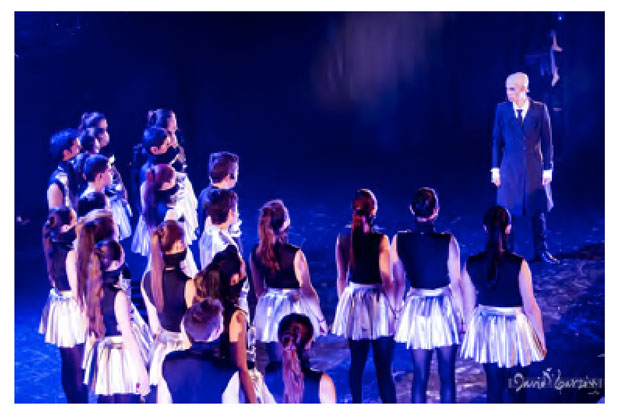
Behind the curtains everything is chaos… The technical team redirects the lights, checks for wires on the floor, arranges the black legs, cleans the stage and verifies the musical instruments; everybody runs back and forth to organize the scenery, students hurry to their dressing rooms to finish their hair and makeup, to get their costumes ready and to breathe before the big show… They all wait for the command to start… and all of their senses are sharpened to receive instructions and begin the show…
I can’t help but think of all the steps that the brain undertakes to create that domino effect of alert:
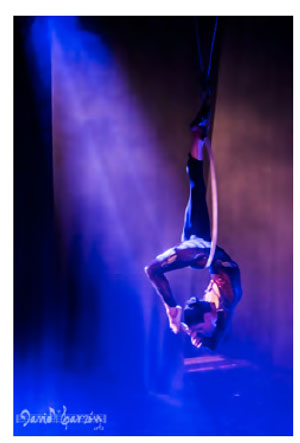 1. Information is perceived though our senses, or it is activated when we think or remember.
1. Information is perceived though our senses, or it is activated when we think or remember.
2. Information is first sent to the thalamus for initial processing.
3. It is immediately sent to the subcortical areas (e.g. the amygdala), which will recruit other regions.
4. Simultaneously , information is sent to the appropriate cortical structures for further processing (e.g. lobes).
5. If it is an emergency information, the amygdala responds promptly and recruits other brain areas.
6. Implicit information surpasses the circulating memory, while explicit information is sent to the hippocampus for a more detailed evaluation and to be stored for a while.
7. Content coded as relevant tends to be stored for more time than content considered to be of low relevance, as it is explained by Choice Theory (Glasser, 1999), in the filter of total knowledge.
8. As time goes by, the hippocampus organizes, distributes and connects memories with the other
pertinent areas of the cerebral cortex to store them for the long term (Jensen, 2008). This is how the “Perceived World” is created, as Choice Theory explains (Glasser, 1999).
And with every explicit instruction from the accompanying adults, comes what cannot be seen: implicit information1 that is not taught by anyone, but it is experienced in every moment prior to a show. The implicit plus the explicit generate an endless array of emotions that vary from a dash of stress, a little bit of nervousness, a hint of excitement, a pinch of alertness and a good dose of satisfaction. So many hours, days, weeks and months of rehearsal will finally be a reality, through a cascade of hormones, neurotransmitters and neuromodulators2 that alert each and every body system, noticing the imminence of the upcoming event and asking those systems to perform their masterpiece choreography of team work, so that body, mind and soul are ready for the show.
Events that touch our emotions, such as a big school show, are remembered forever. Learning becomes much more meaningful and tends to be stored in our long-term memory. The difference between superficial learning and authentic learning is that the former is forgotten very quickly, while the latter lasts in time because it is satisfactory, involves emotions, makes sense, is personally relevant and encourages intrinsic motivation (Jensen, 2000).
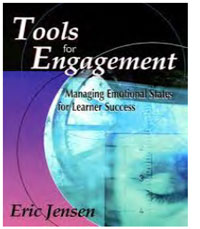 In his book “Tools for Engagement”, Eric Jensen urges us to think about our student’s emotional states as the fundamental basis for learning. A great revelation in the history of neuroscience was the discovery that all extrinsic behaviors are in some way related to the brain’s internal processes. All of the conscious states, from sleeping to imagining, wishing, dreaming and thinking, are the result of the electrochemical activity of the brain. Millions of neurons cooperate to form complex signaling systems that represent behaviors we call “states”. In the same way that the wind, sun and humidity collectively form the atmospheric patterns we know as “weather”, those emotional states permanently create atmospheric conditions in our brain. This weather varies every few seconds and everybody has the ability to control their internal brain weather; in other words, we can control the quality of our lives.
In his book “Tools for Engagement”, Eric Jensen urges us to think about our student’s emotional states as the fundamental basis for learning. A great revelation in the history of neuroscience was the discovery that all extrinsic behaviors are in some way related to the brain’s internal processes. All of the conscious states, from sleeping to imagining, wishing, dreaming and thinking, are the result of the electrochemical activity of the brain. Millions of neurons cooperate to form complex signaling systems that represent behaviors we call “states”. In the same way that the wind, sun and humidity collectively form the atmospheric patterns we know as “weather”, those emotional states permanently create atmospheric conditions in our brain. This weather varies every few seconds and everybody has the ability to control their internal brain weather; in other words, we can control the quality of our lives.
What we feel is real! And on stage this sentence becomes the power behind the work of every participant… Our feelings and emotions combine with our thoughts and actions, and this is finally reflected in our performing behavior, with the natural physiology that precedes that moment of facing the audience: a fast-beating heart, sweaty palms, dry mouth, etc…
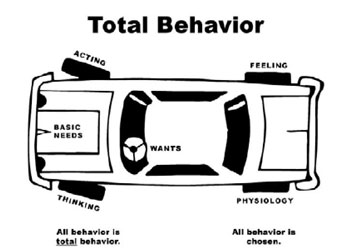 Here is where I can’t help but think of the “total behavior car”, a concept I learned with Brian Lennon during my training in Choice Theory in the late 90s, and that became a guide for many of the explanations about my own behavior and that of my dance students. Associating the four wheels of the car with the words thinking, acting, feeling and physiology, helped me create clear images of what I needed to understand about the daily reactions of my pupils.
Here is where I can’t help but think of the “total behavior car”, a concept I learned with Brian Lennon during my training in Choice Theory in the late 90s, and that became a guide for many of the explanations about my own behavior and that of my dance students. Associating the four wheels of the car with the words thinking, acting, feeling and physiology, helped me create clear images of what I needed to understand about the daily reactions of my pupils.
Furthermore, linking the five basic needs (survival, love and belonging, power and recognition, freedom, and fun) with behavior, has been one of the most revealing experiences I’ve had as a teacher, because it enlightens in many ways the path towards my constant search for excellency as a dance teacher (Glasser, William, 1998). Understanding that my students have needs, and that if any of those needs is not satisfied then their behavior is going to be altered, was a realization that made a great difference in the methodology of teaching dance and its applications on the performing arts language.
This discovery defined the subject of the thesis I wrote for my master’s in Dance Education, at the University of New York in 1994; its central topic was the analysis of the learning environment of my dance classes, and its results are still a beam of light for this pedagogical path.
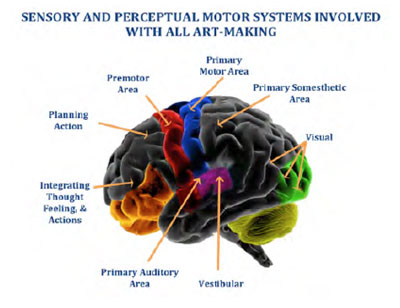 Artistic experience, seen from the classroom or the stage, involves specific anatomical structures in the brain, dedicated to the processing of that experience. In the 70s, it was thought that artistic experience only involved the right hemisphere of the brain, a notion that is now obsolete (Jensen, 2001). In his book “Arts with the Brain in Mind”, Eric Jensen poses that the arts are a major discipline with measurable results that are culturally necessary, exist in all populations and have an enormous ethical and aesthetical value that can be exercised rigorously; it is a major discipline that creates a curricular symphony of profound, transversal, sequential, continuous, articulated, vertical and horizontal character. In that same book, Jensen claims that the arts enhance the learning process thanks to the neurobiological systems they nourish: the sensory system, the attention system, the cognitive system, the emotional system and the motor system, among others.
Artistic experience, seen from the classroom or the stage, involves specific anatomical structures in the brain, dedicated to the processing of that experience. In the 70s, it was thought that artistic experience only involved the right hemisphere of the brain, a notion that is now obsolete (Jensen, 2001). In his book “Arts with the Brain in Mind”, Eric Jensen poses that the arts are a major discipline with measurable results that are culturally necessary, exist in all populations and have an enormous ethical and aesthetical value that can be exercised rigorously; it is a major discipline that creates a curricular symphony of profound, transversal, sequential, continuous, articulated, vertical and horizontal character. In that same book, Jensen claims that the arts enhance the learning process thanks to the neurobiological systems they nourish: the sensory system, the attention system, the cognitive system, the emotional system and the motor system, among others.
 In his compilation research paper, called “Champions of Change: The Impact of the Arts on Learning” (1999), Edward B. Fiske analyzes the non-academical benefits of the arts. I have been able to recognize some of them in our school environment during the past 25 years of artistic experiences at Rochester School.
In his compilation research paper, called “Champions of Change: The Impact of the Arts on Learning” (1999), Edward B. Fiske analyzes the non-academical benefits of the arts. I have been able to recognize some of them in our school environment during the past 25 years of artistic experiences at Rochester School.
Fiske describes them as follows:
- The arts impact students that normally don’t get involved in anything.
- Students learn to connect in more friendly ways: there are less fights, camaraderie increases, racism decreases and levels of destructive sarcasm also decline.
- The school environment becomes an experience to discover new things. This can rekindle a genuine love of learning in those students that are discouraged by theoretical information.
- The arts foster personal and collective challenges in students of all ages.
- With the arts, students connect to the real world, where all theatrical, musical, dance and plastic products are available to the general public.
- Students learn to be autodidacts, and to use their own learning rhythms to achieve excellence.
- The arts reach diverse socio-economical populations, and open unexpected professional pathways.
I return to my starting point… A school show is much more than what the audience sees. A school show is brain, emotion and cognition at the same time. Artistic experience in the classroom or the stage provides multiple growth opportunities at the social, emotional, cognitive, spiritual and physical level… And there are still people who wonder if the arts are useful in a school environment… It’s clear that the answer lies in the text of The Little Prince -“the essential is invisible to the eyes”-, says Saint-Exupéry.
Next time any of you readers sit down to watch a show, make sure your glasses are on so that you can observe what cannot be seen: the symphony of corporal systems, the choreography of neurotransmitters in permanent action, the music sheet of infinite neural connections, and the satisfaction of needs, all of the elements that turn dancers, musicians and actors into super-humans… Those humans that have mutated thanks to the unique and unrepeatable artistic experience!
1 The term “implicit learning” refers to the fact that 99% of our learning happens unconsciously, according to Dr. Emile Donchin of the University of Illinois (Jensen, 2000).
2 Neurotransmitters, such as acetylcholine and norepinephrine, are the biochemical messengers of the body that are stored in the axons of neurons and are released during synapsis for the chemical conduction of the nervous impulse; neuromodulators, such as ATP and adenosine, are substances that are secreted and act similarly to neurotransmitters, except that they not only exist in synapses, but also as extracellular fluid; hormones, such as ACTH and adrenaline, are substances secreted by specialized cells called glands (pituitary, thyroid, parathyroid, suprarenal) and travel through the bloodstream, affecting various body processes (Sousa, 2002).
Bibliography
Alexander, P. (1992). Biología. Prentice Hall.
Fiske, E. B. (1999). Champios of change. Inédito.
Glasser, W. (1999). Teoría de la elección: Una nueva psicología
de la libertad personal. Paidós.
Jensen, E. (2000). Brain Facts. Inédito.
Jensen, E. (2000): Brain Based Learning. Corwin Press.
Jensen, E. (2001). Arts with the Brain in Mind. ASCD.
Jensen, E. (2008). Carpeta del curso Teaching with the
Brain in Mind. San Diego, California, Estados Unidos.
Sousa, D. (2002). Cómo Aprende el Cerebro. Corwin Press.

Rick Doughty
Thank you for this article and its emphasis. It made me think of being in my wife’s second grade classroom and watching her function as an expert in classroom choreography. Lessons are being taught, but this activity is dwarfed by her constant attention to the states of her students. Without breaking instructional stride she provides an effective redirect to an autistic student who is beginning to demonstrate repetitive behavior leading to a blow up, recognizes that brains are full and brings the class together in a music activity before moving on, pauses to briefly focus the entire class on how an accomplishment makes them feel good inside and reminds them that that good feeling is a treasure that can never be taken away.
What takes place in that room, and in so many classrooms where effective instruction happens, is art. It wasn’t taught through tests, it can’t be captured on a multiple choice exam, and it is more important than the academic subjects (which are important). I agree that the subjects like the arts that make us interact real time with others connect us in ways that other academic subjects can’t. There is no substitute for the life skill of being well connected to the people and the world around us.
Do you or does anyone else reading this have some good sources for integrating the arts with the Common Core?
Iliana Aljure
Thanks for your comment Rick. I have been a dance teacher since I was 16 years old and have seen the magic of dance in the evolution and growth in every dimension of the students: cognitive, emotional, social and physical. I strongly believe in the power of movement in any subject and I am currently working in the importance of dance as a cross, interdisciplinary and supporting element for history, math, social sciences and biology. I am glad your wife has seen its power also, as well as the other art forms. I suggest a book called STRONG ARTS, STRONG SCHOOLS! Sorry for not having answered before! Thanks!